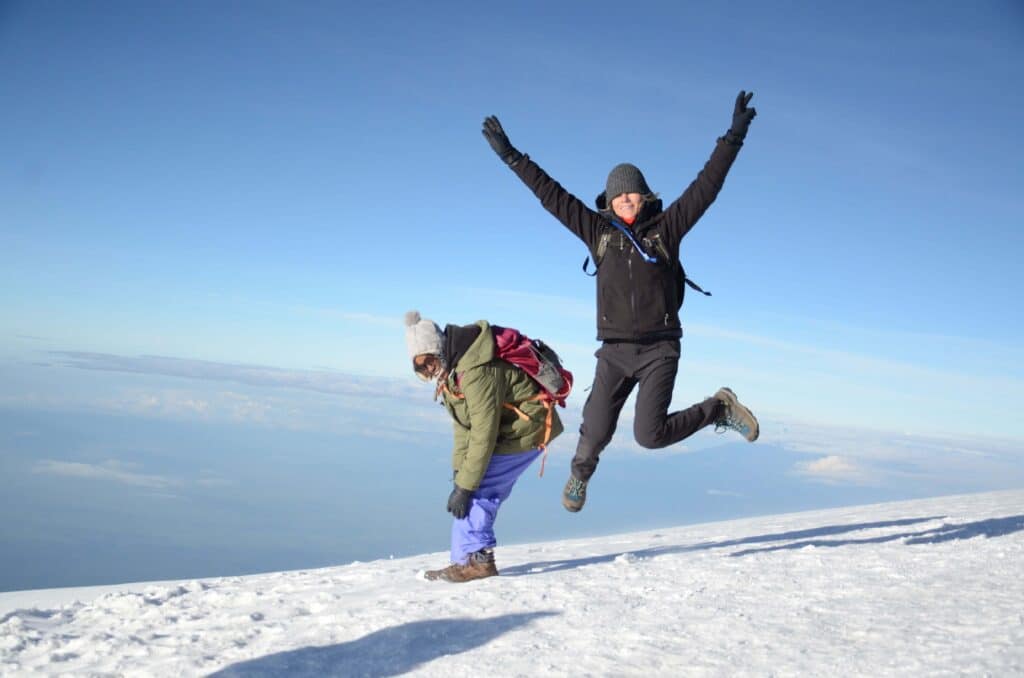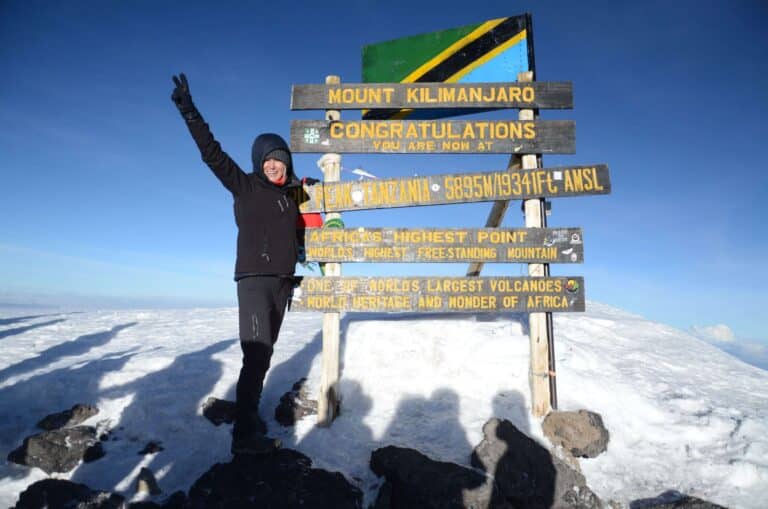The best time to hike Mount Kilimanjaro: a nuanced guide

When it comes to Africa and more specifically Tanzania, Mount Kilimanjaro is a bucket-list adventure.
Choosing the right time to climb can literally make or break your experience.
On this article we will go deeper on what is the best moment to hike Kilimanjaro. Beyond the usual periods of months, this guide takes an innovative approach: breaking down Kilimanjaro’s traditional seasons by personalizing recommendations and busting common myths to help you pick the best time for your unique hiking goals.
Of course, we will also have a look at the best months of the year, according to different criteria.
Let’s start climbing.
Choosing the right time to climb can literally make or break your experience.
On this article we will go deeper on what is the best moment to hike Kilimanjaro. Beyond the usual periods of months, this guide takes an innovative approach: breaking down Kilimanjaro’s traditional seasons by personalizing recommendations and busting common myths to help you pick the best time for your unique hiking goals.
Of course, we will also have a look at the best months of the year, according to different criteria.
Let’s start climbing.
Understanding Kilimanjaro’s climate: more than just dry vs. rainy
Most hikers only think about rain and wish for dryness, but Kilimanjaro’s climate is much more nuanced. When preparing for your trip, consider also the temperature fluctuations. Near its summit, nights can drop below -4°F (-20°C) regardless of the season.
Besides that, consider the following aspects.
Besides that, consider the following aspects.

Wind patterns
Some months bring stronger winds, affecting one’s experience. They might come from different sides at different parts of the year.
At Zohar, we offer you two routes:Machame, coming from the southwest side. Lemosho, coming from the west.
While most of the winds blow from the southeast during March and May, November and December are the times when winds can blow stronger from northeast, together with rain.
Consider that Kilimanjaro is a massive mountain and for this reason it has complex and unique weather. If you want to avoid stronger winds, consider choosing Lemosho path.
At Zohar, we offer you two routes:
While most of the winds blow from the southeast during March and May, November and December are the times when winds can blow stronger from northeast, together with rain.
Consider that Kilimanjaro is a massive mountain and for this reason it has complex and unique weather. If you want to avoid stronger winds, consider choosing Lemosho path.
Cloud cover
While some months offer clearer skies, others create dramatic cloudscapes. Both can be great for photography, it depends on what you would like to see.
If your goal is crisp, clear landscape photography, opt for January, February, or late September. If dramatic, moody cloudscapes appeal to you, other months provide more atmospheric variety.
Also, to be considered that Kilimanjaro has five distinct ecological zones, according to the altitude:Cultivation zone (2,600-5,900 ft / 800-1,800m): clouds are frequent, especially in mornings and evenings. Forest zone (5,900-9,200 ft / 1,800-2,800m): due to the forest mist, clouds are frequent as well, during the afternoon. Moorland zone (9,200-13,100 ft / 2,800-4,000m): clouds can appear on the first hours of the day and then they dissolve. Alpine zone (13,100-16,400 ft / 4,000-5,000m): clouds are rarely experienced at these altitudes. Arctic zone (16,400-19,341 ft / 5,000-5,895m): clouds rarely occur at this extreme altitude. As you hike towards the summit, consider these zones to make the most of your experience.
If your goal is crisp, clear landscape photography, opt for January, February, or late September. If dramatic, moody cloudscapes appeal to you, other months provide more atmospheric variety.
Also, to be considered that Kilimanjaro has five distinct ecological zones, according to the altitude:
Choosing the best time based on your goals
There’s a perfect time for everyone. Your ideal time depends on which priorities you have.
• Peak season: between June and September mountain hikes get busier. If you are looking for more peaceful time, plan for November.
• Budget-orientated: in the very same way, for lower prices it is advisable to dodge peak season. Visiting during the rainy season might be the best choice.
• Adventure seekers: rainy season offers a challenging and rewarding climb, often with fewer hikers.
• Summit success: colder conditions from June to October often require slower ascent rates due to the need for heavier gear, extra layers, and careful pacing, which aids acclimatization and increases summit success.
• Peak season: between June and September mountain hikes get busier. If you are looking for more peaceful time, plan for November.
• Budget-orientated: in the very same way, for lower prices it is advisable to dodge peak season. Visiting during the rainy season might be the best choice.
• Adventure seekers: rainy season offers a challenging and rewarding climb, often with fewer hikers.
• Summit success: colder conditions from June to October often require slower ascent rates due to the need for heavier gear, extra layers, and careful pacing, which aids acclimatization and increases summit success.
Kili and the climate change
As for the rest of the planet, Tanzania and Mount Kilimanjaro are experiencing changes in the patterns of the weather.
Notably, Kilimanjaro’s glaciers are rapidly shrinking. There for more than 11.000 years, their shrinking has been noted by science a reasonably time ago, but now its receding is happening faster.
Global warming improved ice melting and reduced snowfall. It also has changed raining regime, where short raining period has been arriving later and later.
While science has not yet reached a conclusion of how long Kilimanjaro’s glaciers will last, UN studies predict that all glaciers on the planet will be gone by 2050. Kilimanjaro’s ones should be gone even sooner. As of 2025, Furtwängler glacier, the most iconic one, is still there and you can touch it.
All that said, keep this as practical advice: include some weather unpredictability on your plans, since it’s happening more and more often.
Notably, Kilimanjaro’s glaciers are rapidly shrinking. There for more than 11.000 years, their shrinking has been noted by science a reasonably time ago, but now its receding is happening faster.
Global warming improved ice melting and reduced snowfall. It also has changed raining regime, where short raining period has been arriving later and later.
While science has not yet reached a conclusion of how long Kilimanjaro’s glaciers will last, UN studies predict that all glaciers on the planet will be gone by 2050. Kilimanjaro’s ones should be gone even sooner. As of 2025, Furtwängler glacier, the most iconic one, is still there and you can touch it.
All that said, keep this as practical advice: include some weather unpredictability on your plans, since it’s happening more and more often.
Month-by-month breakdown: what you can expect
Now that we saw some more nuanced perspectives about times to hike the mountain, let’s have a look at the most traditional one, month-by-month.
From January to mid-March
It is the best option for the ones looking for dry & warm conditions. Relatively speaking, the warmest period of the year ensures great colors for pictures.
Less crowded than peak Summer, its summit can be windy in February.
Less crowded than peak Summer, its summit can be windy in February.
From mid-March to May
This is the rainy season, when there are fewer hikers and lush landscapes are appreciated.
Because of the rain, the risk of finding muddy trails increases.
Because of the rain, the risk of finding muddy trails increases.
From June to October
That’s the peak season with most stable weather and best summit success rates. The weather is cooler, with clear skies, ideal for first-time hikers.
You can expect to find crowded routes, especially Machame.
You can expect to find crowded routes, especially Machame.
November and December
This is a less crowded season, that often surprises for its dryness. As a shoulder season, it’s the season of unpredictability.
Rain episodes are shorter than March to May.
Rain episodes are shorter than March to May.
Make the best time something personal
While traditional advice suggests January-March and June-October as the best times, a deeper look reveals that the best time depends on your goals. Consider the factors that matter the most to you and plan accordingly.
Need help choosing a route or planning logistics? Just outreach to our team for more details and explore our in-depth Kilimanjaro guide.
Need help choosing a route or planning logistics? Just outreach to our team for more details and explore our in-depth Kilimanjaro guide.
